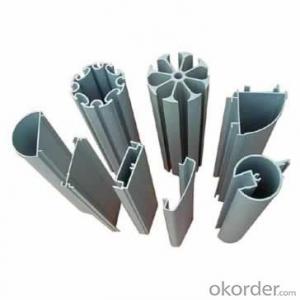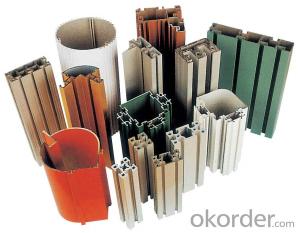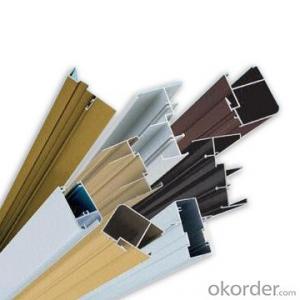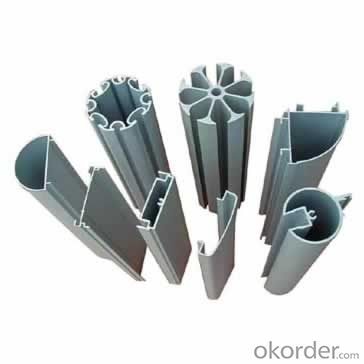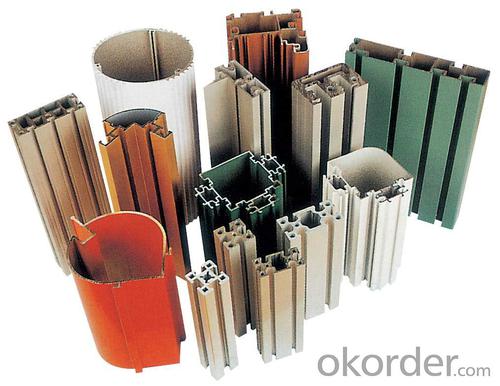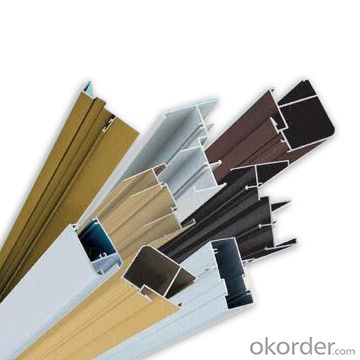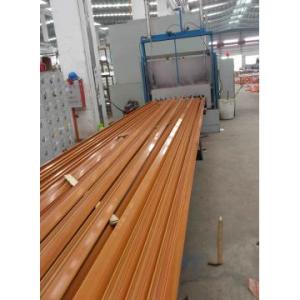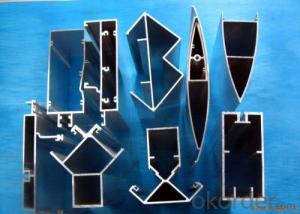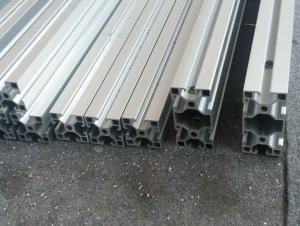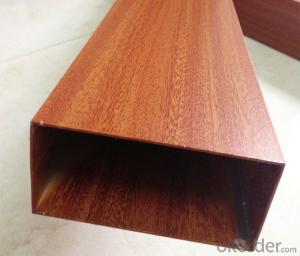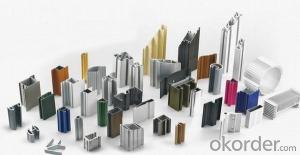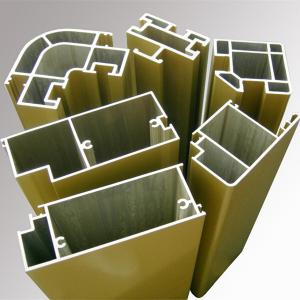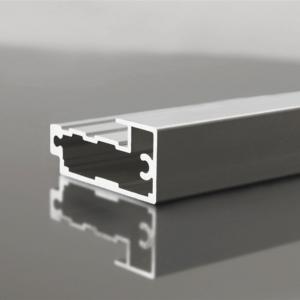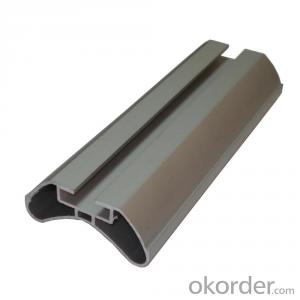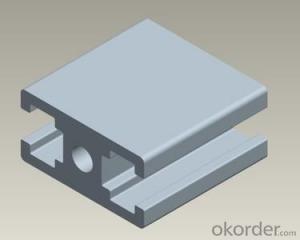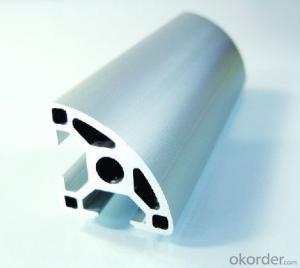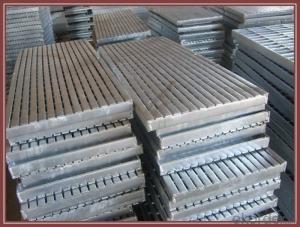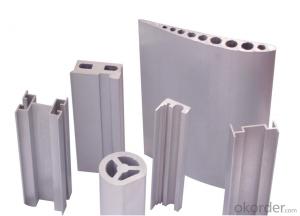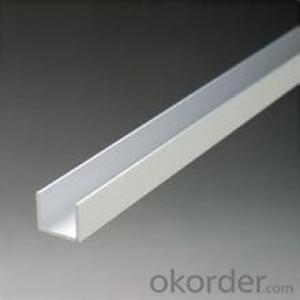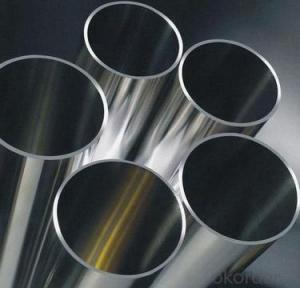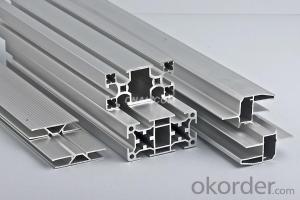Structural Aluminum Profiles - Alu Profile Extrusion 6061 T5
- Loading Port:
- China Main Port
- Payment Terms:
- TT OR LC
- Min Order Qty:
- -
- Supply Capability:
- -
OKorder Service Pledge
OKorder Financial Service
You Might Also Like
Aluminium is a relatively soft, durable, lightweight, ductileand malleablemetalwith appearance ranging from silvery to dull gray, depending on the surfaceroughness. It is nonmagnetic and does not easily ignite. A fresh film ofaluminium serves as a good reflector (approximately 92%) of visible lightand an excellent reflector (as much as 98%) of medium and far infraredradiation. The yield strength of pure aluminium is 7–11 MPa,while aluminium alloys have yield strengths ranging from200 MPa to 600 MPa. Aluminium has about one-third the densityand stiffness of steel. It is easily machined,cast, drawn and extruded.
Aluminium alloys (or aluminum alloys; see spellingdifferences) are alloysin which aluminium(Al) is the predominant metal. The typical alloying elements are copper, magnesium,manganese,silicon,tin and zinc. There are twoprincipal classifications, namely casting alloys and wrought alloys, both of which are furthersubdivided into the categories heat-treatableand non-heat-treatable. About 85% of aluminium is used for wrought products,for example rolled plate, foils and extrusions.Cast aluminium alloys yield cost-effective products due to the low meltingpoint, although they generally have lower tensile strengthsthan wrought alloys. The most important cast aluminium alloy system is Al–Si,where the high levels of silicon (4.0–13%) contribute to give good castingcharacteristics. Aluminium alloys are widely used in engineering structures andcomponents where light weight or corrosion resistance is required
Features:
Material | Alloy 6063,6061,6005or according to customer’s choice |
Temper | T3, T4, T5, T6 |
Surface | Anodize, electrophoresis, powder coating, PVDF coating, wood grain painting, matted, etc. |
Length | Coating 6.5 meters, Anodizing 6.5 meters, Mill finish 5 meters |
Application | Industrial, electrical equipment(TV set, air conditioner, refrigerator, computer), decoration,construction, transportation |
Custom Made | We can package following with customer's request. |
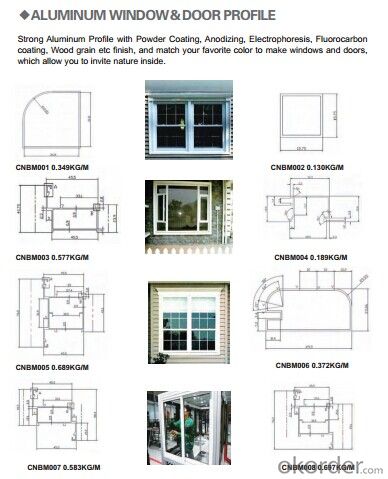
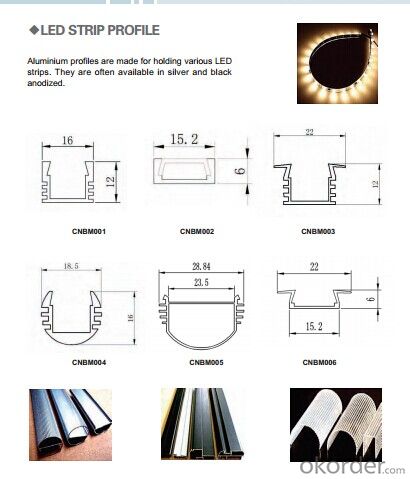
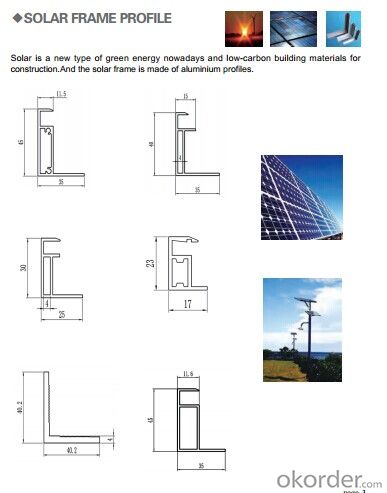
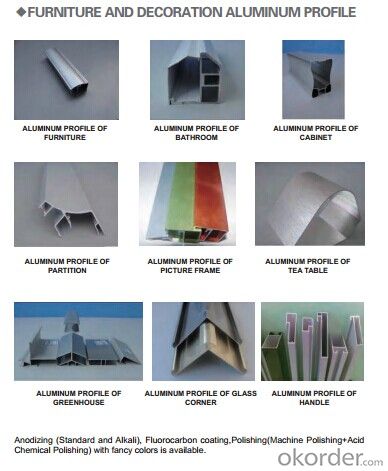
FAQ:
1. What is the form of payment?
Normally 30% TT, L/C at sight
2. Type of quotation?
FOB, CFR, CIF
3. Port of loading?
Shenzhen/Guangzhou port
4. Delivery time?
15-20 days after client’s deposit
- Q: What are the differences between the aluminum profile material and the anodized aluminum profile? Where are they used? If it is necessary to spray the fluorocarbon paint on aluminum, do it on the basis of anodic oxidation or on the aluminum profile material?
- The surface of the material is not oxidized. The oxidized aluminum profile has a smooth and beautiful surface. According to your requirements, choose material
- Q: What is wearing a heat insulation aluminum profile? What is pouring heat insulation aluminum profile?
- Heat insulation aluminum section is to use glue strip to cut off the heat transfer of aluminum profile, popular point explanation, I'm not very professional.First, wear insulation:Extruded two aluminum sections, through the two bars to connect it to an aluminum profile, forming insulation profiles.Two 、 glue injection and heat insulation:An aluminum extrusion is extruded, and the aluminum material outside the rubber is cut off by pouring the heat insulation glue to form a heat insulation section.The price of the adhesive will be more expensive than the stripe.
- Q: What are the different types of surface protection for aluminum profiles?
- There are several types of surface protection for aluminum profiles, including anodizing, powder coating, painting, and laminating. Anodizing involves creating a durable oxide layer on the surface of the aluminum, providing corrosion and wear resistance. Powder coating involves applying a dry powder to the surface and then curing it with heat, creating a tough and decorative finish. Painting involves applying liquid paint to the surface, providing both protection and aesthetic appeal. Laminating involves applying a layer of protective film or sheet to the surface, offering scratch resistance and added durability.
- Q: Is it possible to utilize aluminum profiles in regions with low temperatures?
- <p>Yes, aluminum profiles can be used in cold climates. Aluminum is a durable material with excellent resistance to corrosion and weathering, including low temperatures. It maintains its strength and does not rust or degrade in cold conditions. However, it's important to consider thermal expansion and contraction, as aluminum expands and contracts more than some other materials. Proper design and installation practices can mitigate these effects, making aluminum profiles suitable for use even in extreme cold environments.</p>
- Q: This question asks for methods to ensure the reliable and durable installation of aluminum profiles.
- <p>To ensure the reliable and durable installation of aluminum profiles, follow these steps: Use high-quality aluminum materials that meet industry standards for strength and durability. Ensure proper alignment and level during installation to prevent warping or stress on the profiles. Use appropriate fasteners and adhesives recommended for aluminum to ensure a strong bond. Avoid over-tightening fasteners, which can cause deformation. Regularly inspect and maintain the profiles to check for signs of wear or damage, and address any issues promptly. This will help maintain the integrity and longevity of the aluminum profiles.</p>
- Q: What are the aluminum profile manufacturers in Jiangsu?
- How to choose the industrial aluminum profiles, this problem for the just contact with industrial aluminum profile friends, is really a serious problem to consider.That selection of industrial aluminum manufacturers is not good, money, goods is not good, he can give you redo is OK, but also take time; meet industrial aluminum manufacturers some black, and you may be wrangling, that egg pain.
- Q: Aluminum profiles and plastic doors and windows which good, what market?
- Always feel that aluminum is better to do it?! As far as I know, aluminum is more wear resistant, more resistant to corrosion, and it is not easily deformed. There is an aluminum company in Shanghai. I think it's not bad. I bought it there several times. This is what my family uses
- Q: Are aluminum profiles suitable for outdoor sign applications?
- <p>Yes, aluminum profiles are commonly used for outdoor signage due to their durability, resistance to corrosion, and lightweight properties. They can withstand various weather conditions without rusting or fading, making them an ideal material for long-lasting outdoor signs. Aluminum profiles can be easily cut, shaped, and assembled, offering flexibility in design and functionality.</p>
- Q: What do the 6063 and T5 represent in the aluminum profile 6063-T5?
- Alloy number: our country's current general is the American Aluminum Association "Aluminium Association" numberExamples are as follows: 1070-H14 (pure aluminum)2017-T4 (heat treatment alloy)3004-H32 (non heat treated alloy)2.1 first digit: indicates the main addition of alloying elements1: pure aluminum2: the main alloy element added copper3: the main alloying elements are manganese or manganese and magnesium4: the main alloy element is added silicon
- Q: How do aluminum profiles perform in fire-resistant structures?
- Fire-resistant structures have found aluminum profiles to be highly effective. The inherent properties of aluminum profiles make them excellent for fire resistance and they are widely used in applications where fire protection is crucial. One of the main advantages of aluminum profiles in fire-resistant structures is their ability to maintain their structural integrity even under high temperatures. Aluminum has a high melting point of approximately 660 degrees Celsius, making it highly resistant to heat. This characteristic ensures that the profiles retain their shape and strength during a fire, thereby ensuring the overall stability and safety of the structure. Additionally, aluminum profiles have low thermal conductivity, meaning they do not easily transfer heat. This property helps to contain the spread of fire and minimize its impact on the surrounding areas. By acting as a barrier against heat transfer, aluminum profiles effectively compartmentalize the fire, preventing rapid spread and providing occupants with more time to evacuate. Moreover, aluminum profiles are lightweight and durable, further contributing to their suitability in fire-resistant structures. Their lightweight nature makes them easy to handle during construction and reduces the overall weight of the structure. The durability of aluminum ensures that it can withstand the test of time and maintain its fire-resistant properties throughout the lifespan of the structure. Furthermore, aluminum profiles can be treated with special coatings or finishes to enhance their fire resistance. These additional layers of protection further delay the ignition of the aluminum and improve its fire performance. Overall, aluminum profiles are a reliable and efficient choice for fire-resistant structures. They offer exceptional fire resistance, heat containment, and durability, making them a preferred option for architects, engineers, and builders who prioritize fire safety in their designs.
Send your message to us
Structural Aluminum Profiles - Alu Profile Extrusion 6061 T5
- Loading Port:
- China Main Port
- Payment Terms:
- TT OR LC
- Min Order Qty:
- -
- Supply Capability:
- -
OKorder Service Pledge
OKorder Financial Service
Similar products
Hot products
Hot Searches
Related keywords
